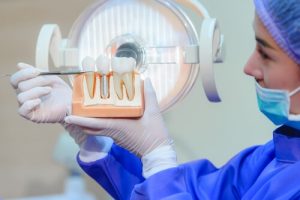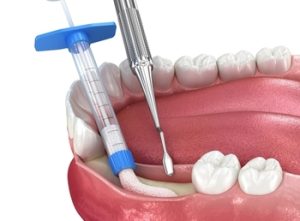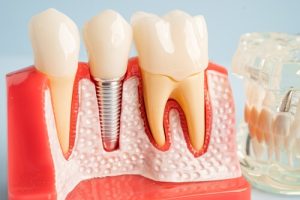A dental bone graft is often the first critical step on the path to dental implants or the restoration of oral health after tooth loss, gum disease, or injury. Whether you’re preparing for the procedure or navigating recovery, understanding how dental bone graft recovery works can reduce anxiety and help ensure better results.
In this guide, we’ll walk you through what to expect after a dental bone graft, how to take care of yourself during recovery, and which signs suggest you may need extra support. From healing timeframes to managing pain, we’ll cover all the essentials to promote healing and avoid potential complications.
What Is a Dental Bone Graft?
Dental bone grafting is a surgical method used to restore or increase bone volume in the jaw. It’s commonly performed after a tooth extraction or in preparation for dental implants, where there isn’t enough natural bone to securely anchor the implant.
Bone grafts may be made from several types of material: bone from your own body (autograft), animal bone (xenograft), donor human bone (allograft), or synthetic materials (alloplast). The selection is based on your oral health status, the extent of bone loss, your treatment goals, and advice from your dentist.
Why Bone Grafting May Be Needed
Dental bone grafting is most often required in the following situations:
- Tooth loss: After tooth extraction, the surrounding bone can shrink, compromising your ability to receive a dental implant.
- Loss of bone structure: Often caused by advanced gum disease, physical trauma, or infections.
- Tooth socket preservation: To prevent bone collapse following extractions.
- Preparing for dental implants: This ensures the jawbone is strong enough to support long-term outcomes.
Without bone grafting, implants may not be possible, or their success may be significantly compromised.
What Happens During the Dental Bone Graft Procedure?
The dental bone graft procedure typically follows this sequence:
- Initial consultation: Your dentist assesses your oral health, reviews X-rays or scans, and discusses treatment options.
- Anaesthesia: The procedure is performed under local anaesthetic, though general anaesthesia may be used for complex cases or anxious patients.
- Surgical site preparation: The gum tissue is opened to access the jawbone.
- Placement of graft material: The bone graft material is placed in the target area.
- Closure: The gum is repositioned and sutured over the graft site.
- Post-operative care: You’ll receive instructions and medications to support healing.
While a bone graft is a surgical procedure, it’s typically done in a dental clinic and is generally regarded as safe when carried out by trained and experienced dental professionals.
Dental Bone Graft Recovery Timeline
Healing after a dental bone graft is a gradual process. The timeline may vary based on your age, health, graft type, and adherence to post-operative care. Here’s what you can expect:
1. Initial Recovery: First 48–72 Hours
- Discomfort and swelling are most pronounced during this stage.
- You may notice mild bleeding, which is normal.
- Pain medication (prescribed or over-the-counter) helps manage discomfort.
- Ice packs applied to the outside of the face help reduce swelling.
- Keep your head elevated, even while sleeping, to minimise inflammation.
2. The First Week
- Most patients return to work within 2–3 days.
- Continue with prescribed antibiotics to prevent infection.
- Follow a soft foods diet (soups, yoghurt, mashed vegetables).
- Avoid brushing directly on the surgical site.
- Refrain from vigorous activities or movements that could interfere with the grafted area.
3. Weeks 2–4
- Swelling and pain should have significantly reduced.
- Bone growth begins to occur at a microscopic level.
- Gum tissue continues to heal around the area.
4. Weeks 6–12
- Most bone grafts take at least six weeks to integrate with your natural bone.
- Your dentist may schedule imaging to assess how the bone graft heals.
- If the site looks strong, you’ll be cleared for the next stage, typically dental implant surgery.
5. Beyond Three Months
- In some cases, full integration takes up to six months, especially with larger bone grafts or extensive bone loss.
What Helps Promote Healing?
Following the correct aftercare routine is vital to ensure smooth and effective healing. Here’s how you can support the healing process:
 1. Follow Your Dentist’s Instructions
1. Follow Your Dentist’s Instructions
Your dentist’s instructions are tailored to your case. These typically include:
- When and how to take pain medications
- The correct use of prescribed antibiotics
- How to clean your mouth safely
- What to avoid in the days after surgery
2. Apply Ice Packs
In the initial 24–48 hours, place ice packs on the affected area in 15-minute intervals. Doing so minimises swelling and offers relief from discomfort.
3. Eat Soft Foods
Choose soft meals such as smoothies, pureed vegetables, soups, or scrambled eggs to avoid irritating the surgical area. Avoid crunchy, spicy, or hot foods that could irritate the surgical area or dislodge the graft material.
4. Maintain Oral Hygiene Carefully
- Use mouth rinses recommended by your dentist.
- Avoid direct brushing on the graft site.
- Stay away from alcohol-based mouthwashes until cleared.
5. Avoid Smoking and Alcohol
Smoking dramatically reduces blood flow to the area and may increase the risk of graft failure. Alcohol may interact with medications or delay healing.
6. Rest and Recovery
Minimise physical activity for the first few days. Take time off work if possible and avoid exercise until your dentist gives clearance.
Understanding the Potential Risks of Dental Bone Grafting
As with any surgical or invasive procedure, a dental bone graft carries some potential complications. Fortunately, most people experience a successful recovery, but it’s important to be informed.
Potential Complications Include:
- Graft failure: The bone material may not integrate properly, often due to infection, poor circulation, or smoking.
- Infection: Preventable with prescribed antibiotics and good hygiene.
- Excessive bleeding: Rare but possible, especially in patients with clotting disorders or those who stop medications prematurely.
- Allergic reaction: Some may react to the graft material, particularly if it’s an animal bone or synthetic material.
- Severe pain: Pain that worsens instead of improving may indicate infection or rejection.
- Swelling beyond normal limits: may be with pus-like discharge may suggest infection.
- Nerve irritation (temporary numbness): occurs if the surgical procedure affects nearby nerves.
Always contact your dentist if symptoms worsen or new issues arise.
Preparing for a Smooth Recovery
Being well-prepared before your procedure can make a big difference in your comfort, healing speed, and overall recovery experience. Here are a few simple steps you can take beforehand to set yourself up for a smoother, less stressful recovery.
1. Have the Right Supplies Ready
Before your bone graft surgery, prepare:
- Ice packs
- Soft food for at least a few days
- Over-the-counter pain relief (if recommended)
- A comfy setup with your head elevated
2. Arrange Transport and Help
You may feel groggy after sedation. Have someone drive you home and assist you during the initial recovery period.
3. Communicate Your Health History
Let your dentist know about any existing conditions, allergies, or medications. Good proper preparation helps reduce the risk of potential complications.
Bone Graft Recovery and Dental Implants
Most patients undergo a dental bone graft procedure in preparation for a dental implant. The outcome of the implant strongly relies on how effectively the bone graft integrates with the jawbone.
Only once your graft site is stable and bone growth is confirmed will your dentist proceed with dental implant surgery. This second surgical procedure is usually quicker and less invasive, especially with proper post-operative care.
In the long run, bone grafting supports a more stable implant, restores chewing ability, and brings back a functional smile.
What Happens If the Bone Graft Fails?

- Remove the failed bone graft
- Allow healing time
- Reattempt the bone grafting with a different graft material
- Recommend alternative solutions based on your unique case
Staying on top of appointments and reporting any issues early gives you the best chance of a successful reattempt.
Final Thoughts: Your Path to Recovery
While a dental bone graft might sound intimidating, it’s a highly effective and common solution to restore function, support dental implants, and preserve long-term oral health.
Most importantly, a successful recovery depends on following the advice of your dentist, being vigilant with care, and giving your own body the time it needs to heal.
If you’re concerned about bone loss or want a stable, long-term foundation for dental implants, book a consultation with us at Infinity Dental Care or call (02) 9159 6237. Your journey to a stronger, healthier smile can start with the right care and trusted support.
Note: Any surgical or invasive procedure carries risks. Before proceeding, you should seek a second opinion from an appropriately qualified health practitioner.
Resources
Dunkin, M.A. (2023). ‘Pulling a Tooth (Tooth Extraction)’. WebMD, 30 March. New York, NY: WebMD LLC. https://www.webmd.com/oral-health/pulling-a-tooth-tooth-extraction
Krans, B. (2018). ‘Bone Graft’. Healthline, 7 November. San Francisco, CA: Healthline Media. https://www.healthline.com/health/bone-graft
Cleveland Clinic Staff. (2023). ‘Periodontal Disease (Gum Disease)’. Cleveland Clinic, 10 April. Cleveland, OH: Cleveland Clinic. https://my.clevelandclinic.org/health/diseases/21482-gum-periodontal-disease



 1. Follow Your Dentist’s Instructions
1. Follow Your Dentist’s Instructions